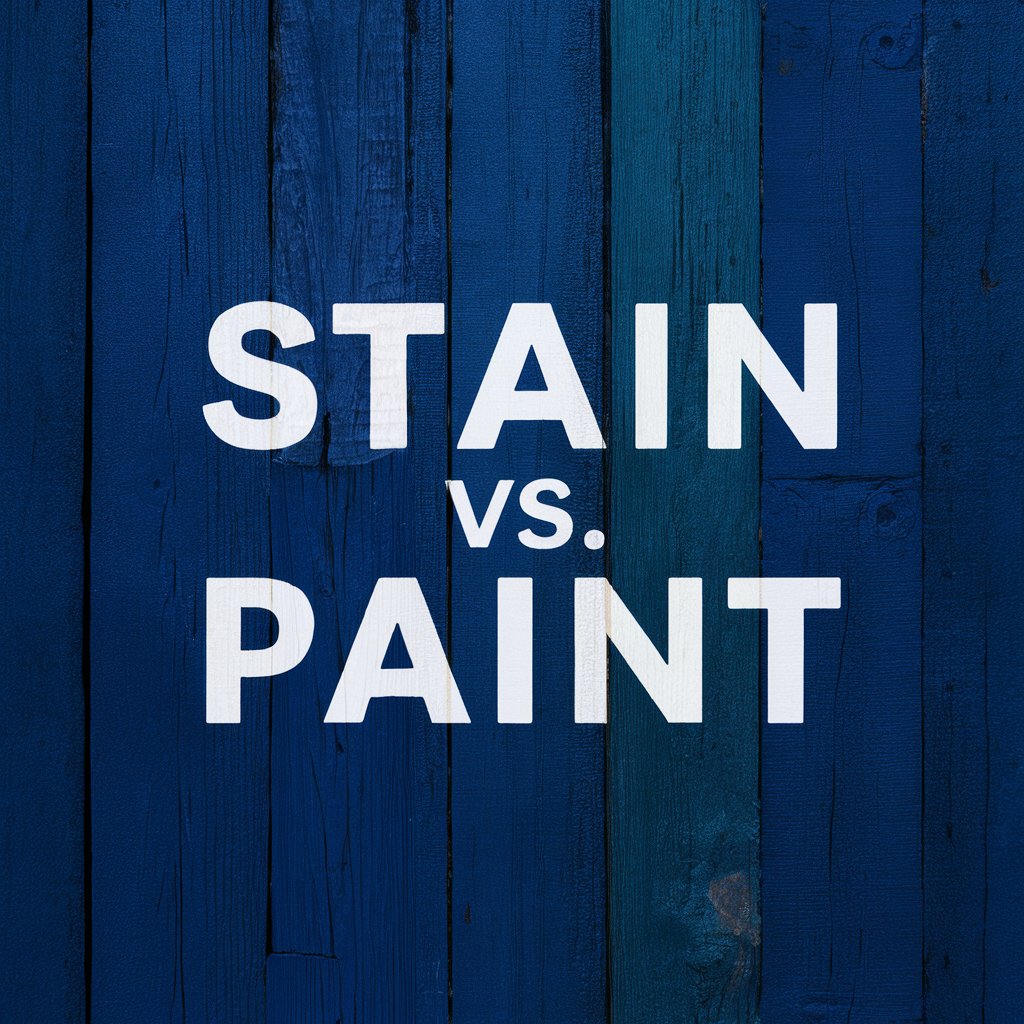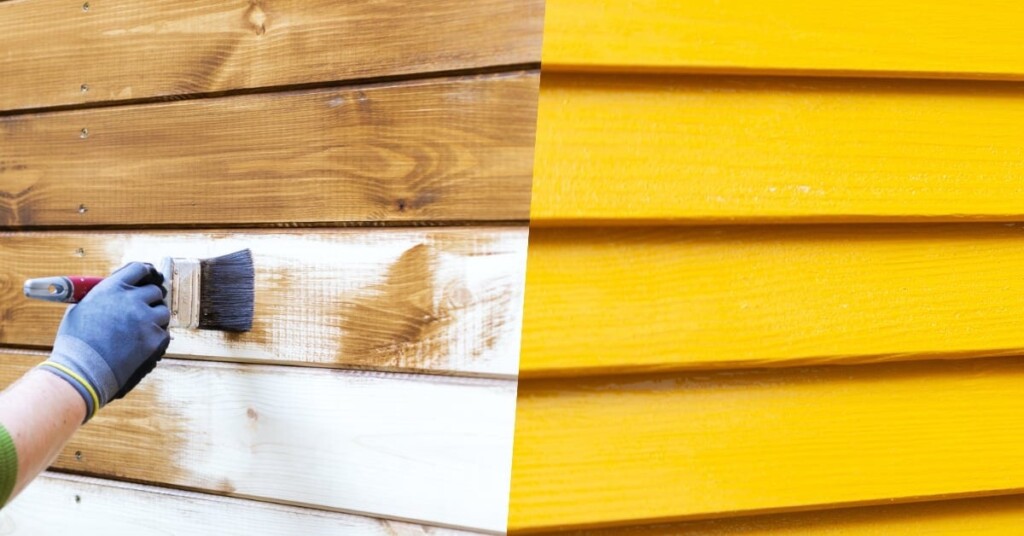When choosing between stain and paint for finishing wood surfaces, one important consideration is the longevity of the chosen option. Understanding how stain and paint perform over time can help you make an informed decision. In this article, we’ll explore the durability of stain and paint, factors that influence their longevity, and considerations for making the right choice.

Is It Better to Stain or Paint?
When deciding between staining or painting a surface, both methods have their advantages depending on the material, the look you want to achieve, and the level of protection needed. Staining is often preferred for wood because it enhances the natural grain and texture, giving it a more rustic or natural look. It’s ideal for projects where you want the wood to be the star of the show—decks, fences, or furniture where the natural wood appearance is a key feature.
On the other hand, painting offers more color variety and can provide a smoother, more polished finish. It’s great for projects where you want to completely transform the appearance of a surface, covering up imperfections or creating a uniform look. Paint also allows for creative freedom with bold color choices or detailed patterns.
To decide which is better, consider the surface and the final look you want. If preserving the natural beauty of wood is important, stain is the way to go. If you’re looking for a bold transformation or color flexibility, paint might be the better choice. For more tips on how to choose paint for various projects, check out this guide to the best paint for kitchen cupboards.
What Lasts Longer: Paint or Stain?
When it comes to longevity, paint generally lasts longer than stain. Paint forms a protective barrier on the surface of wood, shielding it from moisture, UV rays, and other environmental factors. This makes it especially durable for surfaces exposed to harsh conditions, such as exterior walls, siding, or outdoor furniture. A high-quality paint job can last anywhere from 7 to 10 years, depending on the type of paint and how well the surface is maintained.
Stain, while offering a more natural look, penetrates the wood rather than sitting on the surface. This means it doesn’t provide as much protection from weather or wear. Exterior wood surfaces like decks and fences may need to be re-stained every 3 to 5 years, depending on the climate and exposure to sunlight and moisture. However, with the right maintenance, such as applying a topcoat or sealant, stain can also last longer and preserve the natural beauty of the wood.
Ultimately, if your priority is long-lasting protection and coverage, paint is usually the better choice. If you’re aiming to showcase the natural wood grain with a more organic look, stain is worth the extra upkeep. For more insights on painting projects, check out how to repaint a room and the effect it has on your space.

What Are the Advantages of Staining Instead of Painting?
Choosing stain over paint has several benefits, especially when working with wood. One of the biggest advantages is that stain penetrates the surface, allowing the natural texture and grain of the wood to remain visible. This gives wood projects, such as decks, fences, or furniture, a more natural and rustic look. Unlike paint, which covers the wood completely, stain enhances the wood’s character by highlighting its natural beauty.
Stain is also generally easier to apply than paint, as it doesn’t require multiple coats or primer. It’s also less likely to chip, crack, or peel over time, making it ideal for projects that might be exposed to wear or rough handling. Another benefit is that stain is more forgiving in terms of maintenance. When it starts to wear down, you can reapply it without having to strip the entire surface as you would with paint.
Stain tends to be more breathable than paint, allowing moisture to escape from the wood. This reduces the risk of rot or mildew, especially for outdoor projects like decks or garden furniture.
For more guidance on choosing between paint and stain for your DIY projects, check out this detailed comparison of stain vs. paint.
How to Tell If It’s Paint or Stain
Identifying whether a surface has been treated with paint or stain is relatively straightforward if you know what to look for. Paint sits on the surface of the material, creating a solid, opaque layer that completely covers the natural color and texture of the wood. It tends to have a smoother, uniform finish that hides any wood grain or imperfections. Painted surfaces will also typically feel thicker or heavier due to the multiple layers of paint applied.
Stain, on the other hand, penetrates the wood, allowing the natural grain to show through. Stained wood has a more natural look and feels more like the raw material itself. It enhances the natural features of the wood rather than covering them up. If you can still see the wood grain and the finish feels less smooth and less thick compared to paint, the surface has likely been stained.
To test, you can gently scratch a small, inconspicuous area of the surface. If the finish comes off in chips or flakes, it’s most likely paint. If it wears down more evenly without peeling, it’s likely a stain.
For a detailed guide on paint projects, including how to get the best results when working with paint, check out how to use a DIY paint can shaker for efficient paint mixing.
Is It Better to Stain or Paint for Different Projects?
Whether to stain or paint depends largely on the specific project you’re working on. For outdoor wooden surfaces like decks, fences, or siding, stain is often the better option. It allows the wood to breathe, reduces the risk of rot, and enhances the natural beauty of the wood. Stain also fades gradually over time, meaning it won’t chip or peel, making it easier to reapply when needed.
For interior projects, paint tends to offer more versatility. It’s ideal for walls, furniture, and trim, where you want to completely change the color or hide imperfections. Paint also provides a stronger layer of protection against moisture and wear, especially in high-traffic areas like kitchens or bathrooms.
Additionally, paint is better suited when you’re aiming for a more polished, colorful, or modern look. It gives you the freedom to match your decor precisely, as it comes in a wide variety of finishes and shades. Stain, however, is excellent for a more natural or rustic aesthetic.
If you’re working on a high-impact DIY project like repainting your kitchen cupboards, this expert guide offers valuable tips on choosing the right type of paint.
As an Amazon Associate we earn from qualifying purchases through some links in our articles.



